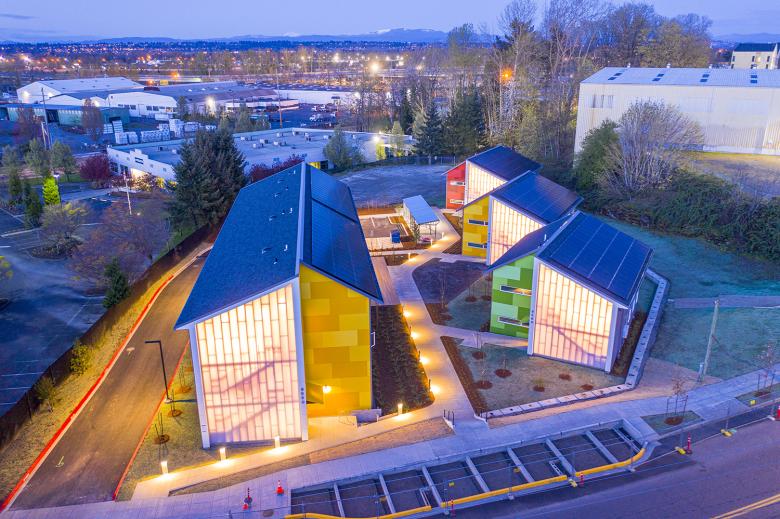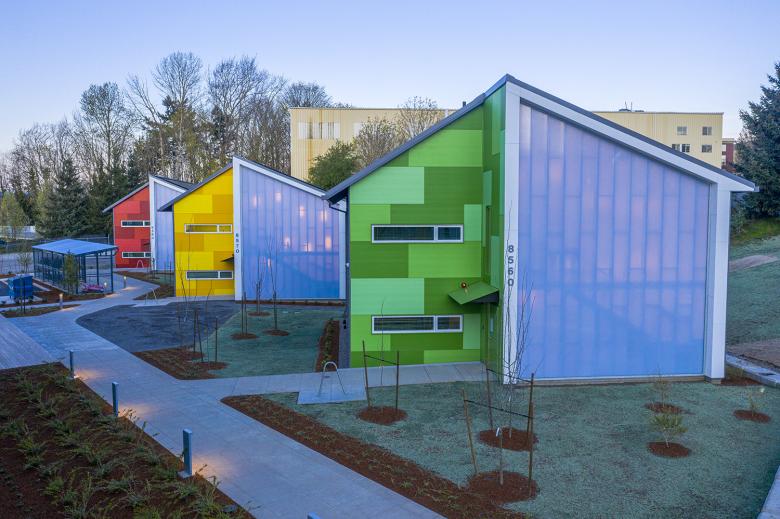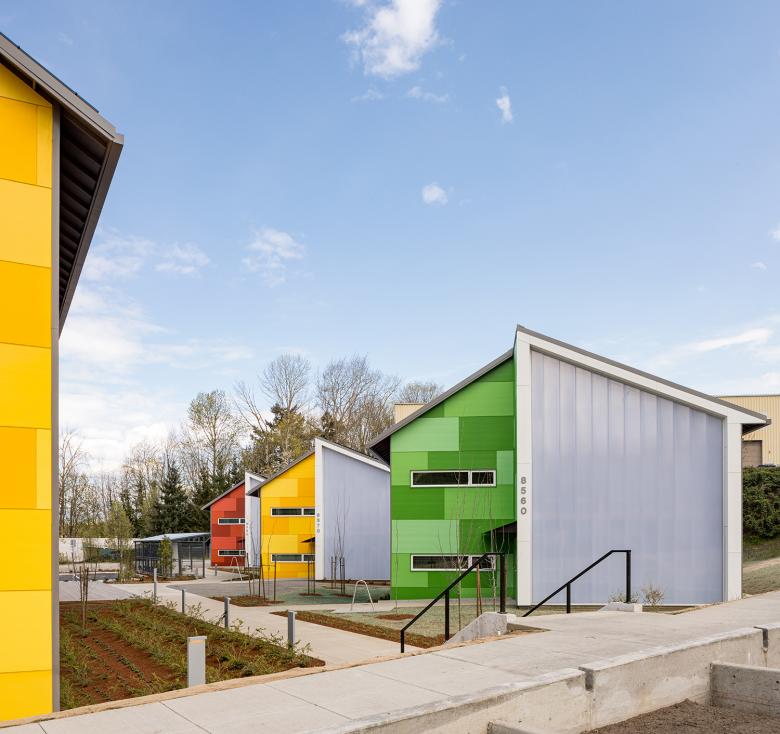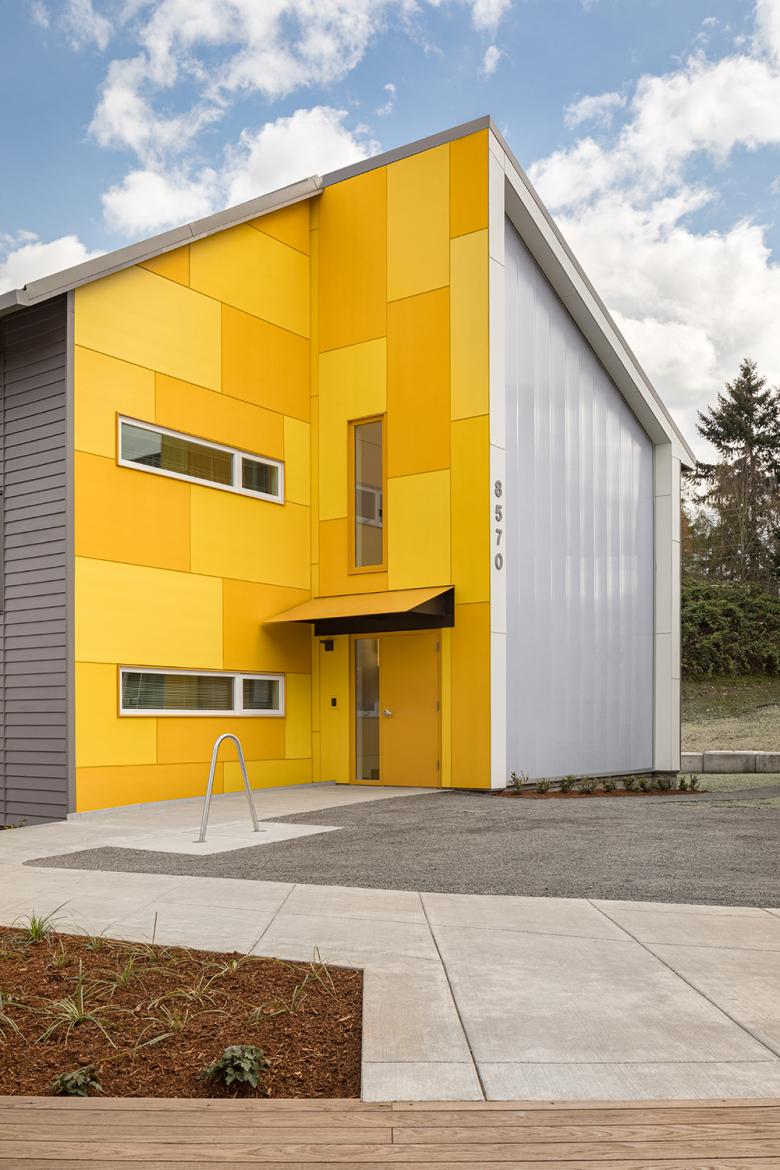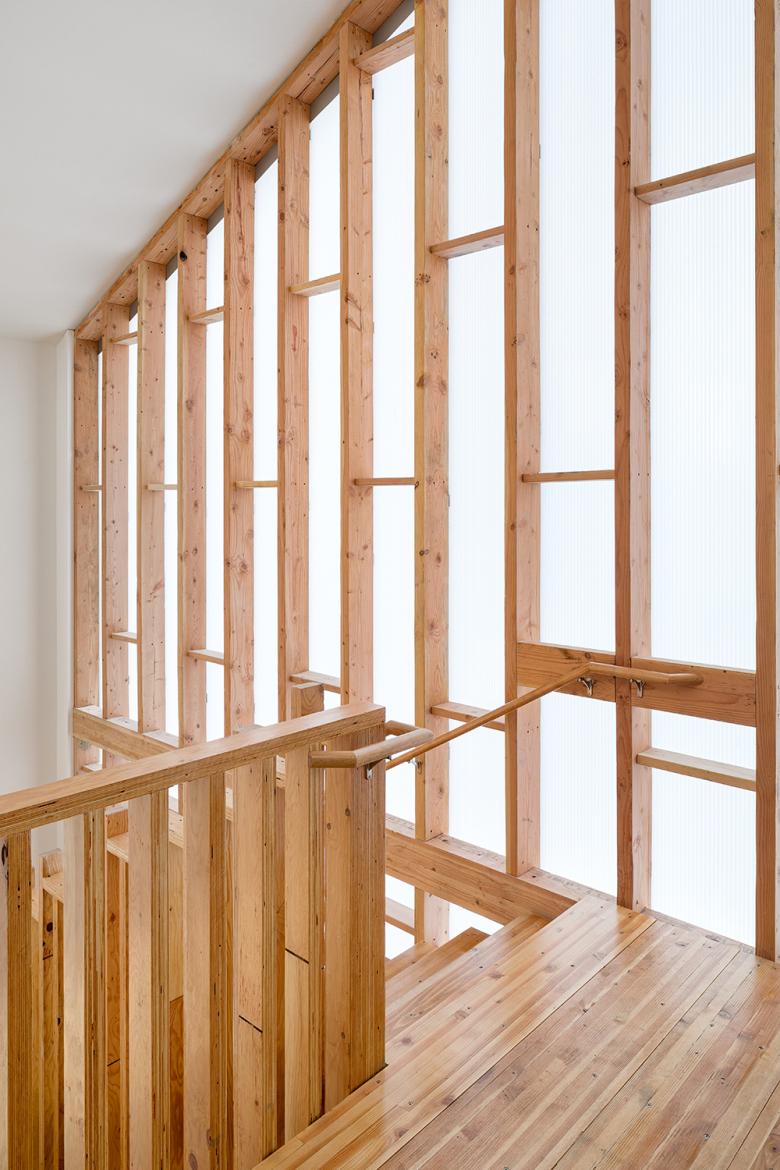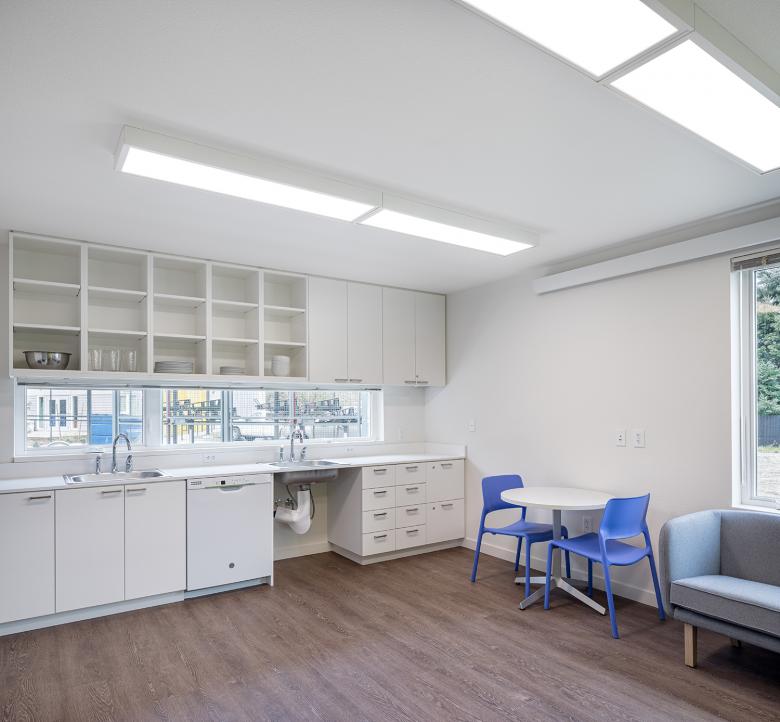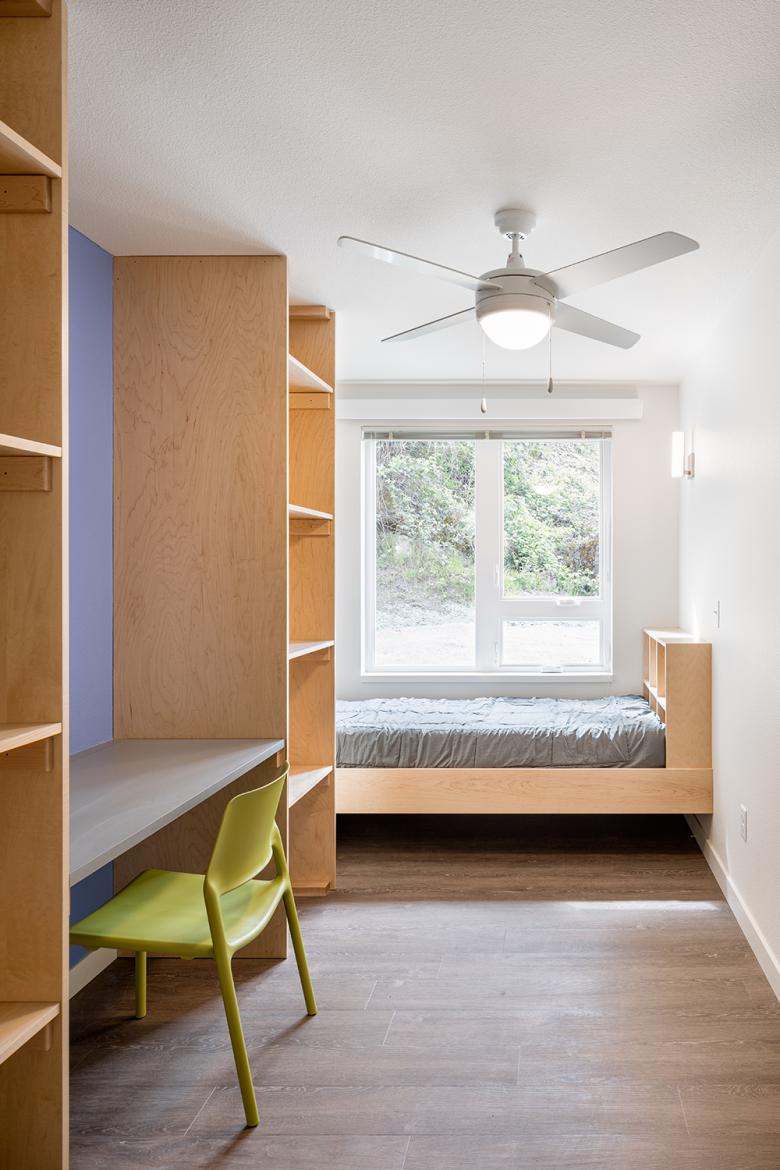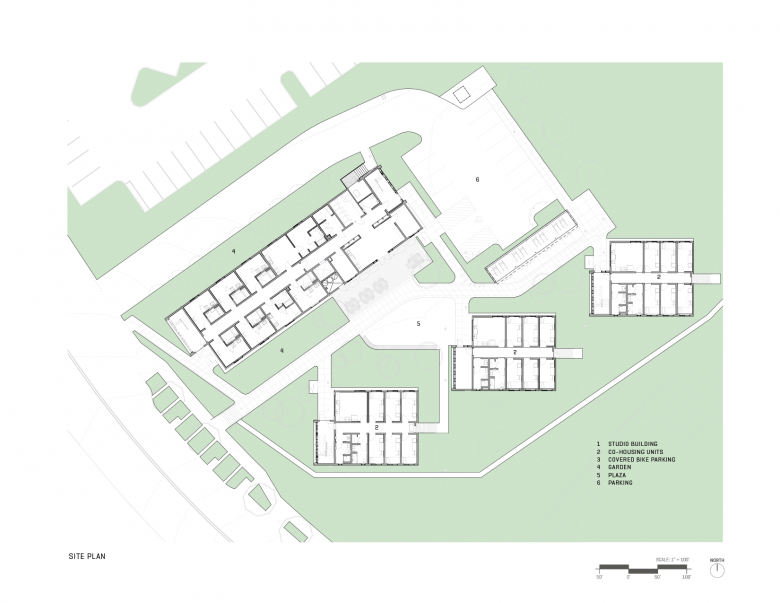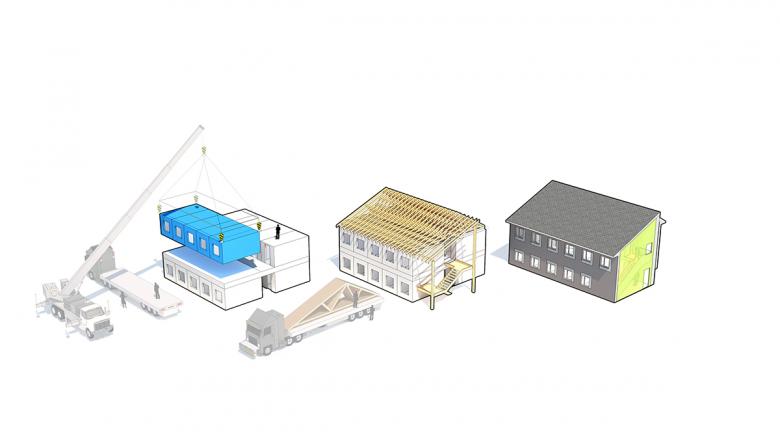Argyle Gardens
Holst Architecture
21. 7月 2020
Photo: Portlandrone
Beneath the colorful siding and translucent panels of Argyle Gardens are prefabricated modules that helped reduce costs for the affordable housing project in Portland, Oregon's Kenton neighborhood. Designed by Holst Architecture, the co-housing project was built as a prototype, and based on its results, we're hoping there's more to come. The architects answered a few questions about the project.
Location: Portland, Oregon, USA
Client: Transition Projects
Architect: Holst Architecture
- Principal-in-Charge: Dave Otte, AIA, LEED AP
- Design Director: Kevin Valk
- Quality Director: Kim Wilson, AIA
- Senior Designer: Dustin Furseth, RA, LEED AP
- Job Captain: Ben Ott, LEED AP
- Design Staff: Erin Fox, RA, LEED AP BD+C, CDT
Mechanical Engineer: MFIA
Electrical Engineer: Samata
Landscape Architect: 2.ink
Civil Engineer: KPFF
Acoustics: Acoustic Design Studio
Sustainability: Earth Advantage
Construction Manager: Walsh Construction
Modular Design & Fabrication: MODS PDX
Polycarbonate Panels: Duoguard
Site Area: 70,790 sf
Building Area: 24,500 sf
Photo: Portlandrone
What were the circumstances of receiving the commission for this project?Working under a Meyer Memorial Trust grant, Holst and our former client, non-profit Transition Projects, developed a flexible, affordable, low-cost housing prototype. Designed as a kit of parts that can be organized into various configurations, Low Income Single Adult Housing, or LISAH, is a dignified co-housing model designed to accommodate an optimum number of people to share community space and support. The modular system can be configured as formerly homeless, workforce, or student housing, or to house intergenerational families together.
Photo: Portlandrone
Please provide an overview of the project.The Kenton neighborhood of North Portland hosts the first buildout of LISAH — Argyle Gardens — on a sloped, oddly shaped, city-owned industrial site close to the MAX light rail line, bus lines, and commercial shopping areas. Argyle Gardens consists of four buildings containing 72 units oriented around a central outdoor space. The largest building contains 35 220-square-foot studio apartments. A large community room, laundry facilities, and support service offices serve as a central hub and communal gathering space for all residents. Each of three co-housing buildings feature two six-bedroom units with two shared bathrooms and a large kitchen.
Argyle Gardens' deeply affordable housing opened to low-income Portlanders and those formerly experiencing homelessness in April 2020. During this time of global hardship, Transition Projects is providing new units of housing for those who need it most. The co-housing approach, small unit sizes, and modular construction contributed to achieving development costs that were 31% lower than typical affordable housing projects, savings that are passed along to residents through rents as low as $300 a month.
Photo: Josh Partee
What are the main ideas and inspirations influencing the design of the building?Funded with low income tax credits from the state, the design of LISAH aims for maximum impact for minimal cost. Each building is composed of modular units constructed offsite. Gabled roof trusses, shingled roofs, and durable cladding will make the modular construction imperceptible from the exterior. Each building takes a simple rectilinear form with a slice removed to reveal color and translucent polycarbonate panels that bring vibrancy to the composition.
Photo: Josh Partee
How does the design respond to the unique qualities of the site?The site's steep topography and existing vegetation provide privacy but challenged the design team to locate the buildings to balance ADA access requirements, environmental considerations, and the maintenance of the large staging area required for modular construction. The resulting careful calibration of siting meets those needs while minimizing direct solar heat gain on the polycarbonate walls, enabling the main entry stair towers to be unconditioned spaces.
Photo: Josh Partee
Was the project influenced by any trends in energy-conservation, construction, or design?The sustainable design of the project is rooted in tried and true approaches to resource efficiency: careful siting for climate, tight building envelope design for energy-efficiency and air tightness, and durable and healthy materials. The buildings include low flow plumbing fixtures, drought-resistant landscaping, low-VOC materials, LED light fixtures, and a rooftop photovoltaic array. The project was designed and constructed to an Earth Advantage Gold standard.
Photo: Josh Partee
What products or materials have contributed to the success of the completed building?The polycarbonate wall panels, manufactured by Duoguard, are key to the design and functional success of the stair towers, creating translucency and enabling those spaces to remain unconditioned. Full-height panels create a seamless installation that greatly enhances the aesthetic effect, particularly at night.
Email interview conducted by John Hill.
